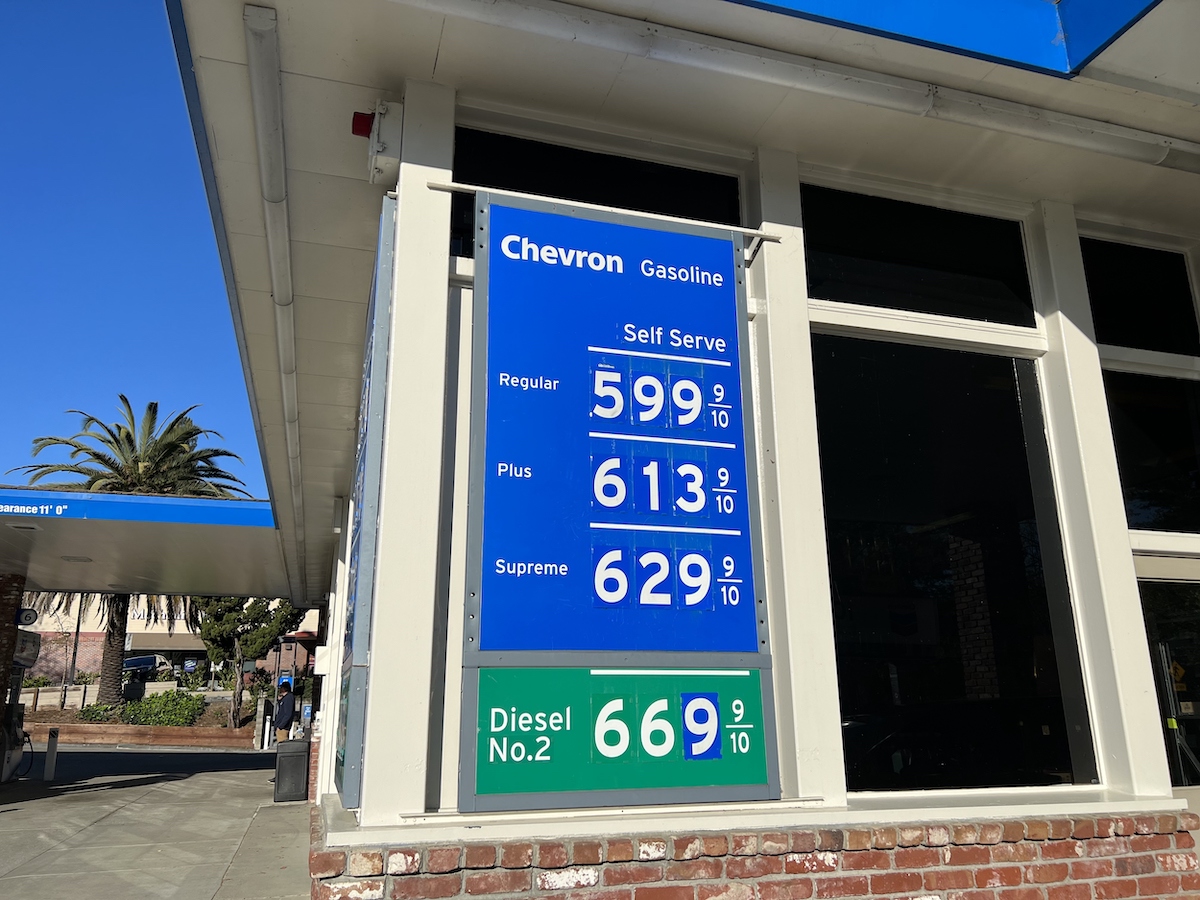Yesterday, Democrats successfully but narrowly passed an anti–price gouging bill in the House to address raging prices at the pump and to deliver on promises for successful climate-change legislation. Meanwhile, the Senate Natural Resources and Energy chair, Joe Manchin, continues to work toward a bipartisan climate and energy package. H.R. 7688, proposed by Reps. Kim Schrier (D-Wash.) and Katie Porter (D-Calif.), will expand the powers of the Federal Trade Commission to “protect consumers from price-gouging of consumer fuels” and abhors “unconscionable pricing of consumer fuels during emergencies.”
It’s a concerning time, with record-high levels of inflation, the Russian invasion of Ukraine, and growing economic malaise causing some to worry if we are reliving the 1970s, which I address here. Nominal week-to-week gas prices are up by 50% from this time last year according to the Department of Energy. The Consumer Price Index, released two weeks ago, showed an 8.3% increase in consumer prices over the past 12 months, with a 30% increase in the energy index and a 44% increase in the gasoline index. Gas prices have increased by 25% since the Russian invasion of Ukraine, and soaring inflation only exacerbates problems at the pump. Biden’s release of oil reserves temporarily lowered gas prices in April, but it was not enough to mitigate our supply issues.
It’s right to want to solve these serious problems, which punish consumers and threaten their way of life. Americans worry about how they’ll continue to commute to work, pay for daycare, and afford groceries. The concerns are well founded, but are price-gouging laws the answer? They certainly aren’t new and are indeed a throwback to the 1970s. In 1979, New York state passed the first law to combat price gouging, and during the 1980s other states followed. The New York statute was passed in response to rising energy prices in the name of consumer protection. It reads:
during any abnormal market disruption of the market for consumer foods and services vital and necessary for the health, safety and welfare of consumers, resulting from stress of weather, convulsion of nature, failure or shortage of electric power or other source of energy, strike, civil disorder, war, national or local emergency, or other cause, no merchant shall sell or offer to sell any such consumer goods or services for an amount which represents and unconscionably excessive price.
The use of the word “unconscionable” is used in today’s pending House legislation, and most states have explicit price-gouging laws using similar language. The problem with phrases such as “abnormal market disruption” and “unconscionably excessive price” are their ambiguity. How much of a price increase is reasonable, and when does it become “unconscionable”? Such unanswered questions open the door for regulators and lawmakers to define the terms, and in doing so cause further harm. The larger economic question is on what basis could they ever make the correct determination? This is where we must relentlessly apply the economic way of thinking so we get a policy that accomplishes good rather one that simply makes us feel better—while exacerbating the underlying problems.
This same conversation emerged last year during the Colonial Pipeline hacking, which disrupted oil supplies along the East Coast, resulting in temporary price increases. At that time lawmakers revived their calls for heightened price-gouging legislation. The premise of these proposals is that firms seek profit and use emergencies as a time to exploit the consumer. It is true that firms always seek to maximize profit and minimize costs. It is also true that each of us is self-interested—we pursue our own interests rather than the common good in our ordinary motivations and choices. Nothing changes about these truths during a crisis—what we must seek to understand is why the prices rise and fall when they do.
If corporate greed is the reason, then we should never see prices decrease—which we do most of the time. We are living in a time of superabundance, a time in which many goods and services are more abundant and more affordable. This pattern of price deflation over time results from competitive markets in which suppliers must compete to offer us their goods and services. One common myth of market economies that motivates the proposed price-gouging legislation is that firms have an antagonistic relationship with consumers, but nothing could be further from the truth. Firms compete with other firms for the business of consumers. Walmart knows you can purchase from Target, Amazon, the Dollar Store, and many others. They want you to shop with them, and they compete for your business.
Another common myth that underpins price-gouging laws is that firms can charge any price they want. This is theoretically true in that Exxon can simply decide tomorrow that it will charge $7 per gallon, but the problem with such a decision is that other gas stations would undercut that price. This is the process by which market prices emerge and change. Prices reflect underlying levels of scarcity and are like a traffic light. Prices increase in markets when goods and services become more scarce, and that price increase is a necessary signal telling us to slow our consumption. The price changes present new opportunity costs to consumers.
The worry among legislators and consumers is whether prices will ever decrease, a legitimate worry. Prices must decrease after the supply shock resolves. The only way to ensure this is to allow the free movement of prices. Price-gouging laws make us feel good, but they create perverse incentives for consumption, distort market prices, send false signals, and mislead us. If we artificially maintain prices below what the market bears, we are telling consumers to maintain their current consumption patterns, and thus price-gouging laws exacerbate shortages and induce hoarding. If prices can temporarily rise, hoarding would not be a problem. The artificially low price inspires injurious behavior.
Current gas prices reflect a variety of problems, including inflation, the war in Ukraine, and global supply issues. Economics puts the lie to viewing policy as some kind of magic wand that makes the bad stuff go away. We cannot simply use policy to change prices. We must do the harder work: that of ascertaining the underlying problems and rectifying them. Solutions include controlling inflation, reigning in fiscal spending, deregulating energy markets and production, facilitating more international trade, and eliminating price-gouging laws. Price-gouging laws may make certain politicians more momentarily popular and offer some psychological relief, but at a cost the consumer cannot long bear.

